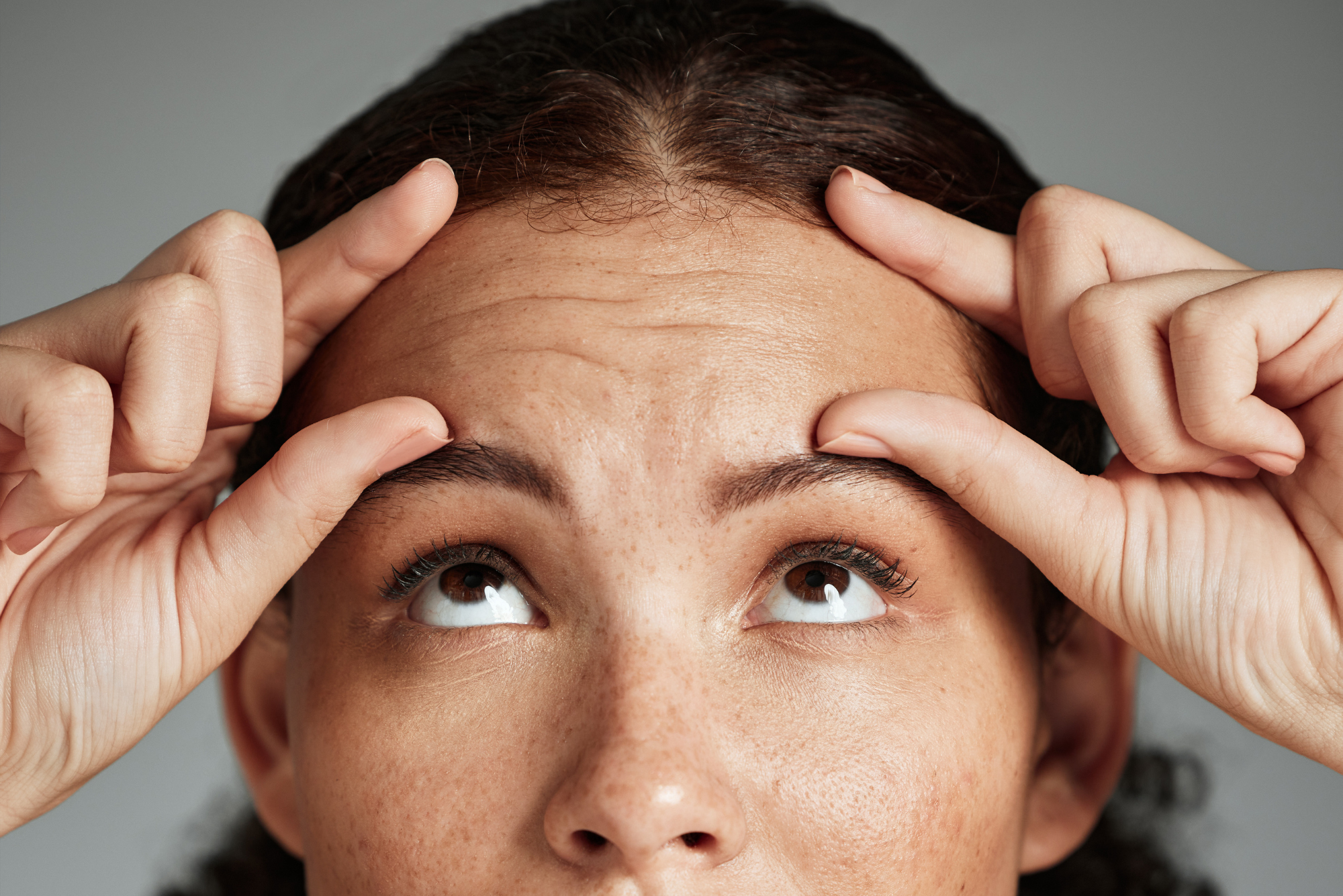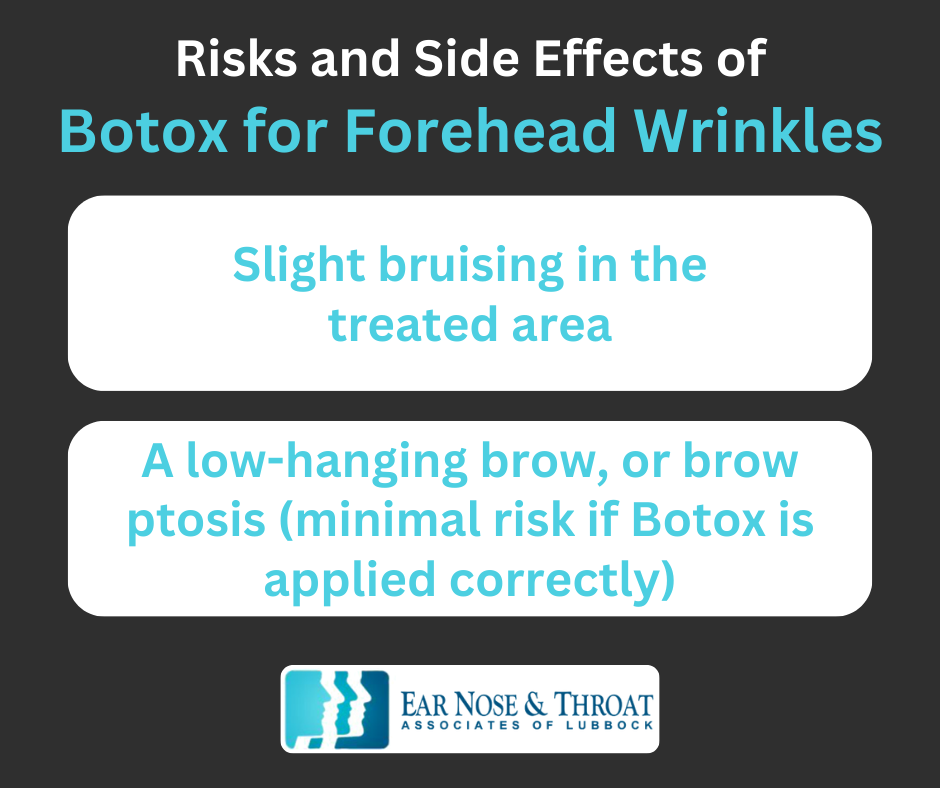Does Botox Work for Forehead Wrinkles and Should You Get It?

You’ve tried everything.
Every anti-aging serum you can get your hands on promises to erase those pesky forehead wrinkles, but they never deliver. Are you stuck with them forever?
Though forehead wrinkles are a normal sign of aging, that doesn’t mean there’s nothing you can do about them.
Using Botox for forehead wrinkles is a clinically proven and safe solution. In fact, it’s one of the only treatments with virtually guaranteed results.
Chances are, you’ve already heard of Botox, but we’ll explain why it’s the perfect treatment for forehead wrinkles in particular.
Does Botox Help Smooth Forehead Wrinkles?
Yes! Botox is intended to treat static wrinkles like those on your forehead, so using Botox for forehead wrinkles is extremely effective. But to help you understand why, we need to delve into the science behind how it works.
Wrinkles form as your skin repeatedly folds and creases due to the contraction of underlying muscles. Over time, these folds and creases deepen and become more permanent.
Think about what happens when you fold a piece of paper. Even after unfolding the paper and flattening it out, you can still see a crease where the fold was. Wrinkles work the same way.
Unlike creams and lotions that target the skin itself, Botox addresses the root cause of wrinkles: the muscles beneath the skin.
Botox is a temporary paralytic agent that weakens and reduces the movement of muscles. Once injected, it binds to the nerves in a muscle, preventing them from releasing the neurotransmitters that tell the muscle to move.
The result is a relaxed muscle that can’t tense up — and smoother-looking skin on the surface.
How Long Do the Effects Last?
If you get Botox for forehead wrinkles, you can expect the effects to last about three to four months.
As your body metabolizes Botox, it wears off the nerve endings. The nerves can send out their neurotransmitters again, and your muscles regain their movement. As this happens, the skin above your muscles will start to crease again.
Contrary to popular belief, once Botox takes effect, you can’t impact how long the treatment lasts with things like exercise, moving your muscles, massaging your muscles, or applying creams to the treated areas. The only factor that affects the duration is how quickly your body metabolizes the Botox.

Risks and Side Effects of Botox for Forehead Wrinkles
There are very few risks to getting Botox injections, but they include:
- Slight bruising in the treated area
- A low-hanging brow, or brow ptosis (minimal risk if Botox is applied correctly)
Additional Details About Botox for Forehead Wrinkles
- Botox works for very deep wrinkles. If you think your forehead wrinkles are too far gone, think again! Although you may need a stronger dose or a longer duration of treatment to get the desired results, Botox will still smooth out deep wrinkles. You may need a little extra patience, but you’ll see results.
- Botox can prevent new forehead wrinkles. Rather than treating wrinkles after they appear, more and more people are opting to get Botox at a younger age to avoid forehead wrinkles in the first place. If you take this route, you won’t have to get injections as often, and you can enjoy a wrinkle-free forehead as you age.
- Botox is extremely low risk. We’ve all heard horror stories that might make us wary, but Botox is a tried and true treatment for wrinkles, and the results are nothing like what you see in the movies. As long as you see a qualified Botox doctor, your face won’t end up droopy, frozen, or dramatically changed. You’ll simply look like a more youthful version of yourself.
If you live in the West Texas area and are interested in Botox for forehead wrinkles or other applications, get in touch! We’ll be happy to set up a consultation.
Dr. Cuthbertson is a physician at Ear Nose & Throat Associates of Lubbock. He joined the team at ENT Lubbock from Houston, where he was chief resident of the prestigious Bobby R. Alford Department of Otolaryngology at Baylor College of Medicine. He is board certified in Otolaryngology and Head & Neck Surgery and has quickly built a reputation, not only as an extremely skilled surgeon, but as an approachable and compassionate clinician adept in the newest standards and technologies. Learn more about Dr. Cuthbertson.
Categories:








